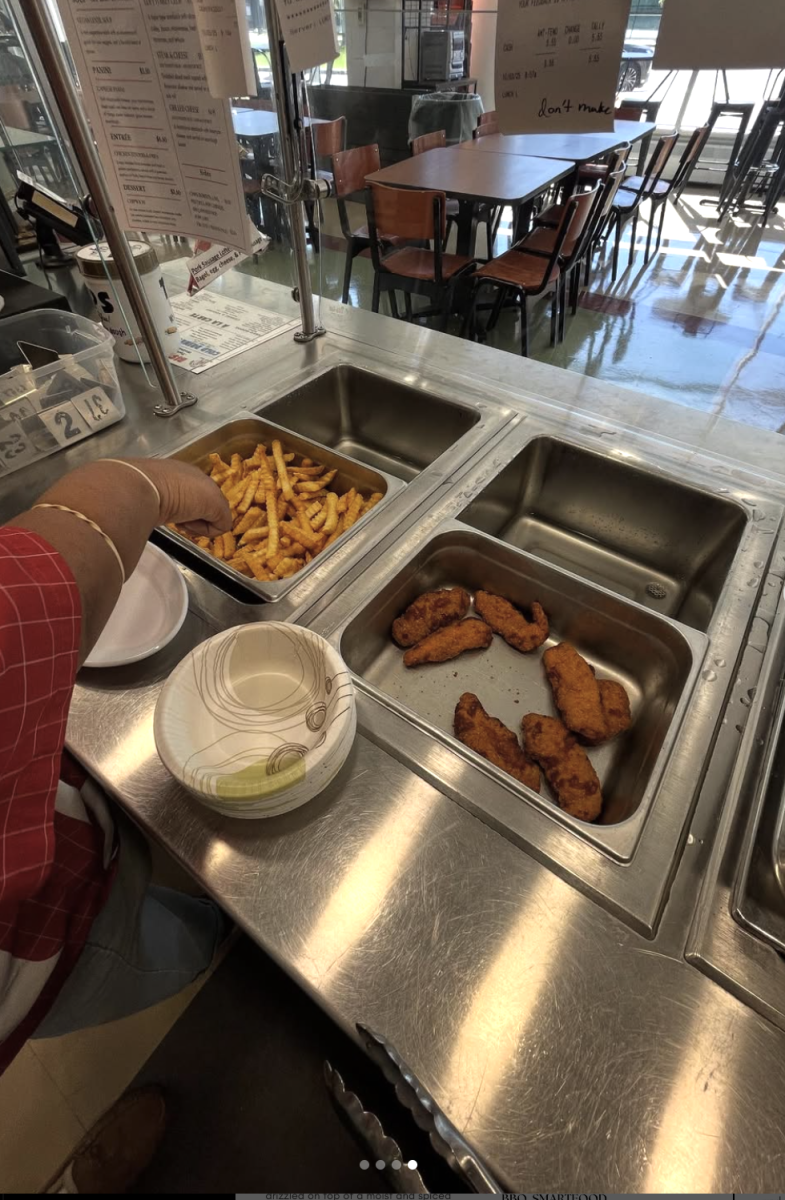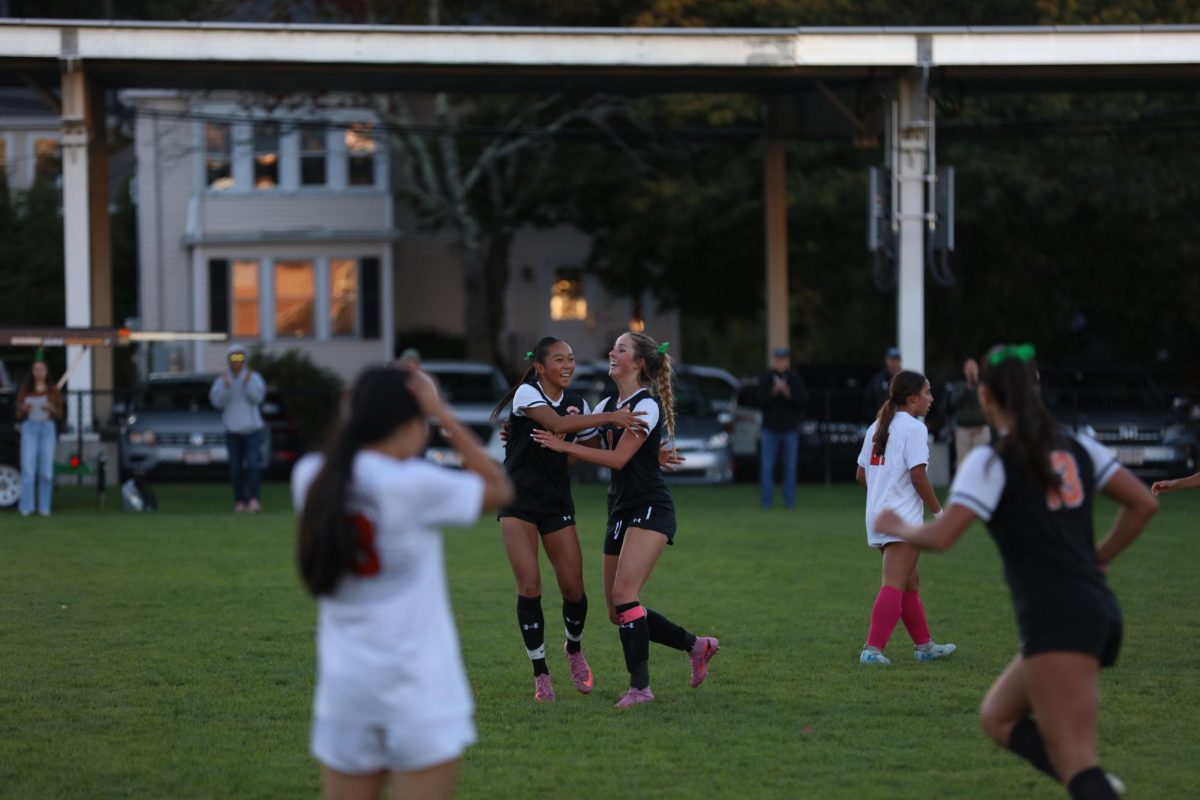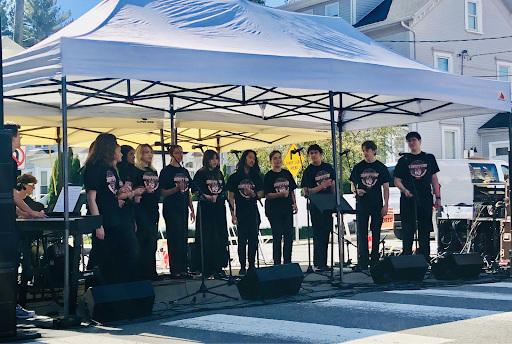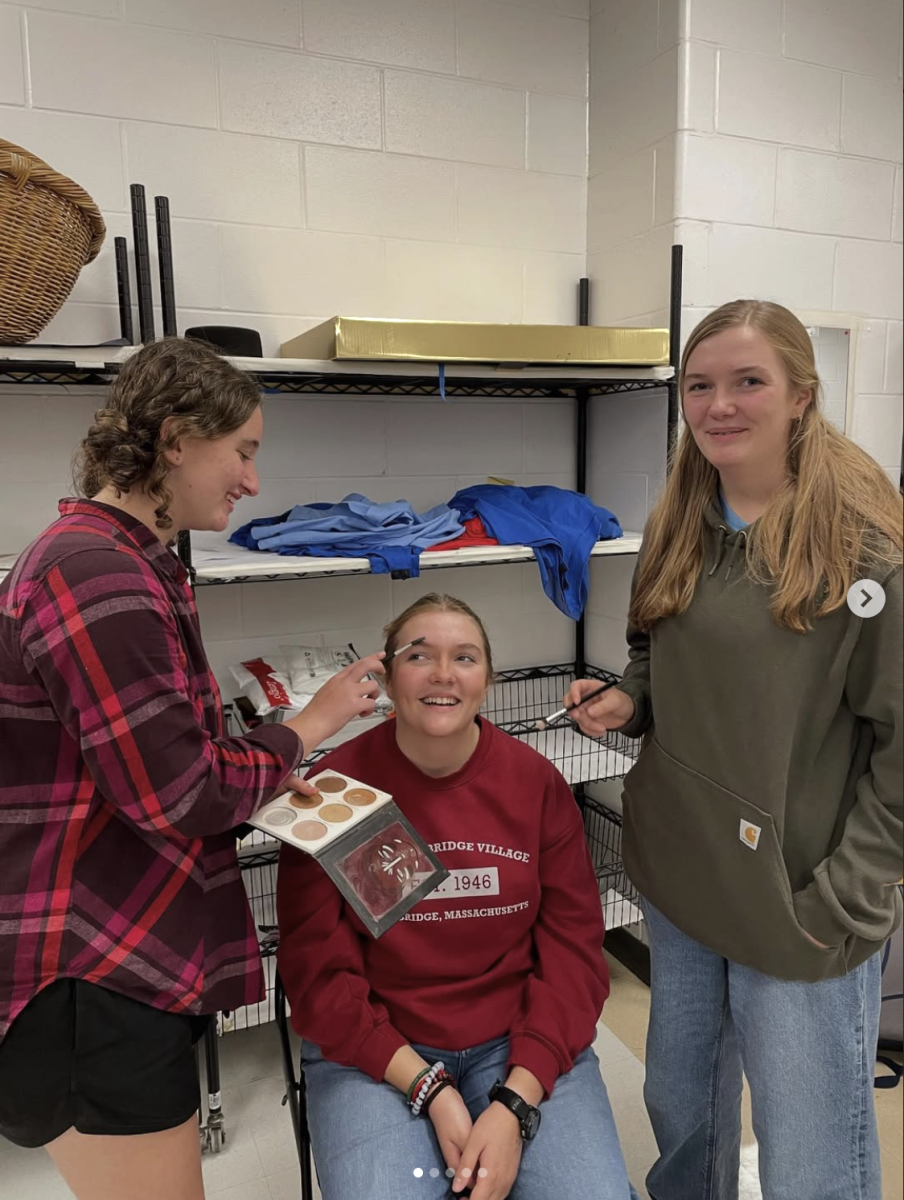by Steven Michael
During television production’s final years in the old school, the studio barely worked, and students were forced to shoot on consumer-grade cameras, English teacher Neil Giordano recalled.
“We were hindered by the fact we could film but not edit,” Giordano said. “We reached a point where there was no point in continuing if we could not have better technology.”
Now, by contrast, grant funding has allowed television production to upgrade to professional cameras and SD card compression technology, he said.
However, applying for the grant, winning approval and spending the funds was a long process.
Coming from the outdated technology of the old school, the television production program arrived to an empty studio in the new school. But, it was just that—empty.
A television studio consists of more than just the studio space itself, Giordano said. It needs microphones, cameras and a lighting grid. It needs a control room with a camera switcher, sound and playback. But none of the equipment was available at the start of last year.
In a twist of irony, the program even lacked a working television, Giordano said.
“Last year was a huge disappointment—only portable cameras from the old school,” Giordano said. “We didn’t have anywhere to edit. The computers didn’t come until last November, and they were not configured until January.”
The $650,000 grant for television production came from Newton’s Cable Reserve Fund, which also provides funding for cable access channel NewTV and other telecommunications projects, according to Giordano.
Although the Board of Alderman approved the grant in April 2010, the equipment was delayed by the bidding process and continual change in technology, Giordano said.
“Technology changes enough that we had to change orders,” he said. For instance, an initial grant proposal included digital tapes, which are now outdated.
While students waited for the technology to arrive, they focused on single camera work, which requires post-production.
“Unfortunately, television production is a technology-based program, so without the technology, you can’t do much,” Giordano said. “We live in the YouTube generation. You don’t need $10,000 to make video, but to make high-quality broadcast video, you need to keep up with the technology of the 21st century.”
At this point, all of the equipment has arrived, but the lighting and curtains are still being installed, Giordano said. Now, television production can choose which direction to follow.
Some possibilities include a cooking show or a talk show, Giordano said.
In previous years, Giordano’s Advanced Television Production class produced Tiger Magazine a variety show with a mix of news, satire, animation and profiles. The live studio removes the need for editing, so more shows can be created, according to Giordano.
Giordano said he hopes to incorporate a creative element with the technology, placing a greater emphasis on performance. He plans to involve more students both on and off camera.
“We could produce a recurring show for the entire year, and students would apply to be on the show,” he said.
Senior Johnny Medlar, who takes Giordano’s Advanced Television Production course and is the officer of Tiger Magazine, said he looks forward to producing music videos and projects with special effects with the new cameras and editing software.
“We used to film with VHS technology. It used to take hours to digitize tapes, now it’s just drag and drop,” Medlar said.
Categories:
Television production receives grant to furnish television studio
October 28, 2011
0
Donate to The Newtonite
More to Discover










































